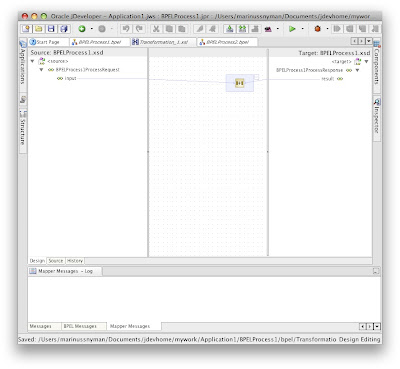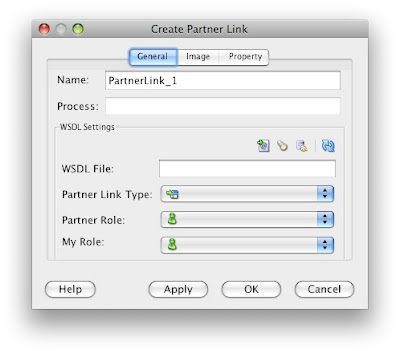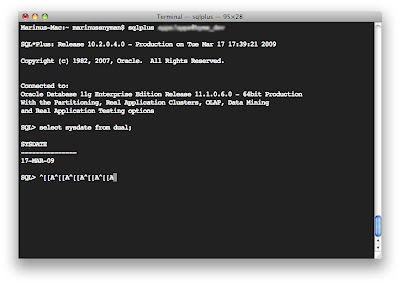There is some irritating bugs in Jdeveloper 10134 and the use of BPEL on Mac OS X - Leopard. Here is what they are, and how I fixed / or got workarounds for them:
The first and biggest problem is not being able to drag a Service from the Component Palette into the BPEL Process diagram. You also can't drag in functions in your transformations. This is quite frustrating since it is a known bug on metalink, but not yet fixed. (Bug Number 6924432) Well there is a easy workaround for the BPEL process diagram. You can rightclick on any of the Process Activities and go to
Insert After > Activities > Activity.
But what if you created a Empty BPEL process? Whell then you'll have to go to the source and add a empty node (<empty/>) to get you started.
Its just as easy to add a Partnerlink. Right-click in the
Services area of the screen, and select
Create new Partnerlink.
 On the transformation side of things it's not quite that easy to work around. The best solution I could come up with is to add the functions directly to the source code in the source tab.
On the transformation side of things it's not quite that easy to work around. The best solution I could come up with is to add the functions directly to the source code in the source tab.
 You can then switch back to the Design view and see your code.
You can then switch back to the Design view and see your code.
 This might not be the best solution, but will centainly work and enable you to create BPEL processes without VMware or Parallels. And will definitely improve your xsl knowledge.. ;-) You can also rightclick ->Help on a function to get information on how to use it.
This might not be the best solution, but will centainly work and enable you to create BPEL processes without VMware or Parallels. And will definitely improve your xsl knowledge.. ;-) You can also rightclick ->Help on a function to get information on how to use it.

The second problem I experienced was that my jdeveloper kept crashing when I wanted to edit a partnerlink. I tried changing the JDK versions it used with no luck. What I found was, as soon as I open jdeveloper I "create a partnerlink" but click cancel right afterwards. Why this worked for me, I don't know, but it certainly solved my problem.

The third and last issue I had was that when launching jdeveloper it doesn't close the terminal
window. What I did to fix that was to add the JDeveloper directory to my PATH environment variable and then launch jdeveloper with the following command:
This will exit the terminal window after opening JDeveloper. To add the JDeveloper ditectory to your path open your .bash_profile file and add the following line:
export PATH=$PATH:"/Applications/jdevstudio10134/jdev/bin"
|
Hope this post will help you use BPEL on Mac OS X Leopard!
 However there is a utility called rlwrap that can help us fix this problem. rlwrap is a readline wrapper for shell commands which uses input from the controlling terminal. It adds a persistent input history for each command and supports user-defined completion.
However there is a utility called rlwrap that can help us fix this problem. rlwrap is a readline wrapper for shell commands which uses input from the controlling terminal. It adds a persistent input history for each command and supports user-defined completion. 5. Add the following line to your .bash_profile:
5. Add the following line to your .bash_profile:






